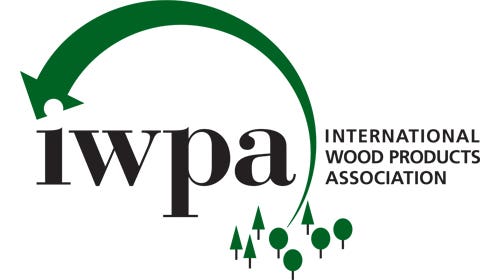Hickory sales boosted by rustic reawakening
An ongoing demand for furniture, casework and flooring with a rustic appearance has kept hickory sales at its peak lately, according to suppliers interviewed by Woodshop News. The species is…
An ongoing demand for furniture, casework and flooring with a rustic appearance has kept hickory sales at its peak lately, according to suppliers interviewed by Woodshop News. The species is unique from other domestic hardwoods as the white sapwood presents a stark contrast to the heartwood featuring bold reddish-brown color fluctuations.
Jack Egan, of Paxton Lumber Co. in Denver, explains that hickory is popular for its sound defects, which are cosmetically appealing rather than physical defects such as loose knots and holes.
“What’s really going strong is the hickory rustic grade. It’s a low grade, not really an NHLA grade. It’s a grade that is selected for as many sound defects as they can find in it,” Egan says.
Hickory (Carya ovata) grows primarily in the Eastern and Midwest United States and eastern Canada. The tree reach heights up to 120’ with diameters of 2’ to 3’.
Dan Carroll, of Certainly Wood in East Aurora, N.Y., has seen an increase in his hickory sales.
“It is not something we sell a ton of, but a majority of calls we’ve seen in the last six to eight months have been for the more calico, rustic kind of look. Although there have been some massive jobs that required very consistent, very plain quarters as well, as in a big museum project where that was all they were doing. So we’ve seen opposite ends of the spectrum on what requests have been for that kind of material,” Carroll says.
One problem is finding material that is consistently rustic. The idea is to find pieces with uniformed character running throughout, but this is hit-or-miss by the very nature of the way hickory grows.
“It’s like ambrosia maple or wormy maple. You don’t want just a few spots; you want uniform coverage. Unfortunately, there is only a small section of that log that people are looking for. You get to the outside and it’s nothing but sapwood. You get close to the center of the log and you pick up knots and defects, not the knots and defects people are looking for in rustic grade, but open knots. So you probably get 40 to 50 percent usable material from the log, unless you want to use the sapwood along the edge for extra detail,” Carroll explains.
Mark Frieden, of Mark Frieden Hardwoods in Pomona, Kan., sees a very strong market for hickory.
“People like hickory because it’s very hard and full of two-tone colors with a lot of speckles and interesting things in it. They want the rustic, interesting types of woods rather than just clear red oak. They want something a little more bizarre. And that’s what hickory gives a person,” Frieden says.
“It’s good for furniture and cabinets and wonderful for flooring. It’s so durable and hard it doesn’t dent nearly as easily as other species. It’s also good to use outside because it doesn’t rot.”
At the retail level, 4/4 hickory is selling for about $3.50/bf.
This article originally appeared in the August 2016 issue.






